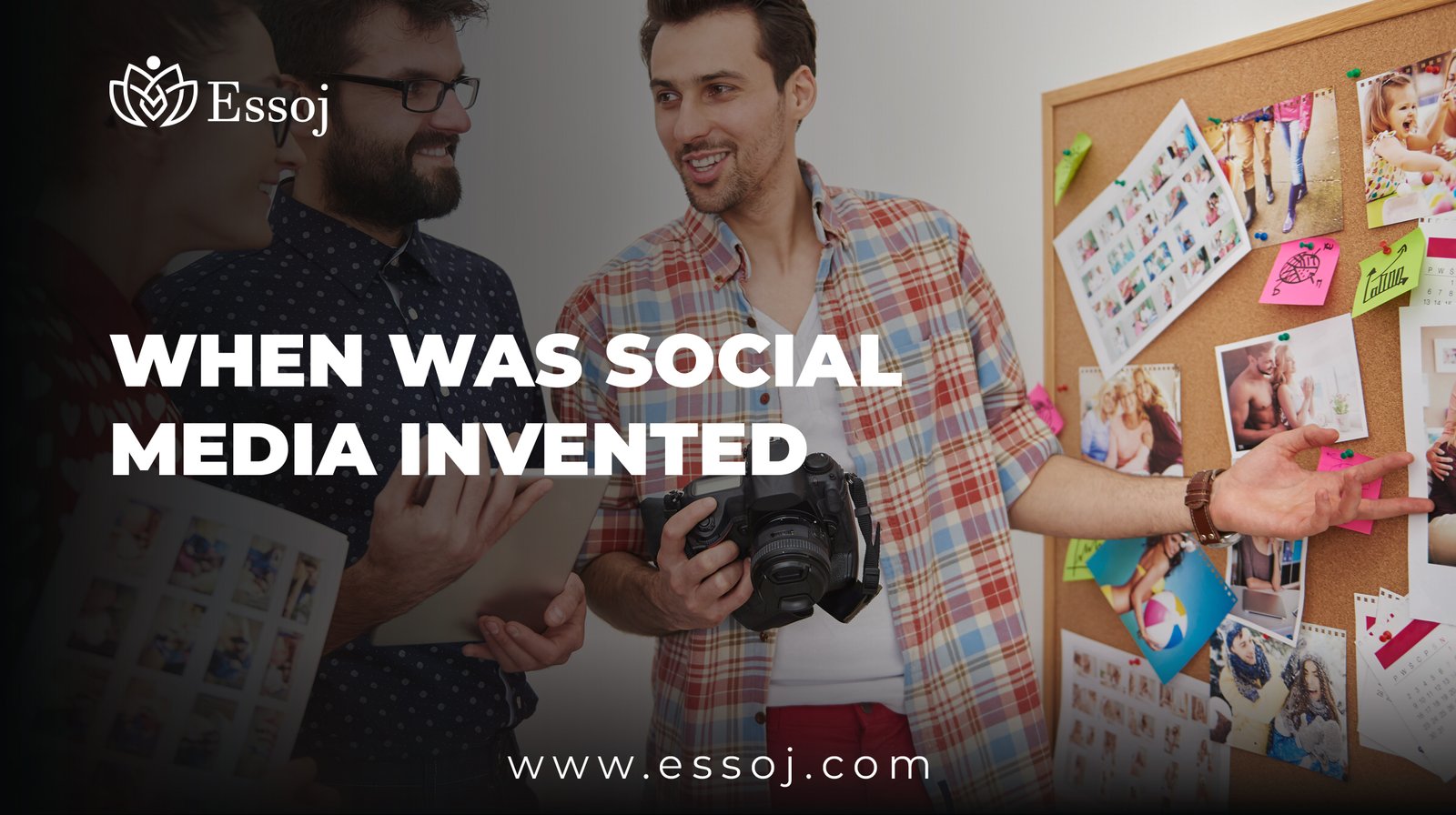When Was Social Media Invented: Our World in Data Online Networking?
Social media is now such a huge part of our lives that it feels like it’s always been around. From waking up to scrolling through our feeds, to staying connected with friends across the globe, we often take it all for granted. But have you ever stopped and asked yourself, “When Was Social Media Invented”? To answer that, we’ll need to rewind the clock and take a look at the fascinating journey of online networking — how it all began, where it went, and what it means for our world today.
The Very Beginning: The 1970s and 1980s
Before we jump into apps like Facebook or Instagram, let’s start from the roots. Back in the late 1970s and early 1980s, the internet as we know it was just starting to form. One of the earliest forms of social interaction online was through Bulletin Board Systems (BBS). These were systems that people dialed into using a modem. They could post messages, share files, and even chat with other users — in a very limited and slow way.
Though it sounds primitive now, it was a game-changer. People could communicate through computers. And that idea — connecting people — was the seed that would grow into what we call social media today.
Another important innovation from this era was Usenet, launched in 1979. It allowed users to post messages in categories called “newsgroups.” While it lacked many of the features we associate with social media, it still created a sense of online community.
1990s: The Rise of Online Communities
As technology advanced, so did the ways people could connect. In the mid to late 1990s, the web started becoming more mainstream. Platforms like GeoCities and Six Degrees emerged. Six Degrees, launched in 1997, is often considered the first real social media site.
So When Was Social Media Invented in a more recognizable form? You could say 1997 with Six Degrees. It allowed users to create profiles, connect with friends, and message each other — the basic features of most modern platforms.
Other platforms soon followed. AOL Instant Messenger, Yahoo! Chat, and forums became hotspots for interaction. These sites weren’t called “social media” yet, but they were doing the job. Online communities such as LiveJournal also began to pop up, offering users a chance to blog and interact through comments.
By the end of the decade, the internet had gone from being a tool for research to a social hub. More people had access, and that meant more ways to connect.
Early 2000s: The Boom Begins
This is when things really started to change. Sites like Friendster (2002), MySpace (2003), LinkedIn (2003), and Facebook (2004) brought social networking into the mainstream.
Each platform offered something slightly different:
- Friendster was about connecting with friends and discovering new ones.
- MySpace let users personalize their profiles with music, pictures, and blog posts.
- LinkedIn targeted professionals, creating a space for career-focused networking.
- Facebook began as a college networking site but quickly expanded to the general public.
If you ask, “When Was Social Media Invented”, the answer could easily point to this era as the explosion of online networking.
At this point, social media was becoming part of our everyday vocabulary. It was no longer a niche interest — it was something that defined a generation.
A Personal Anecdote: Logging Into MySpace for the First Time
I still remember the first time I logged into MySpace. It felt like a new world. Suddenly, I had a space that was mine, where I could post about my day, add music to match my mood, and connect with people I hadn’t seen in years. It wasn’t just fun; it was empowering. It gave us all a voice, no matter how small.
I remember spending hours editing my profile, changing background colors, and choosing the perfect profile song. That kind of freedom in a digital space was new and thrilling.
The Golden Age: Facebook, Twitter, and YouTube
By the late 2000s, social media wasn’t just a trend — it was the norm. Facebook exploded in popularity, Twitter introduced real-time updates, and YouTube changed how we shared and consumed video content.
These platforms added new dimensions to online networking:
- Instant global communication.
- User-generated content.
- Viral trends and movements.
- Live streaming and interactive media.
So, When Was Social Media Invented as the giant that now runs our lives? It wasn’t a single date, but a wave that built over decades — with each platform adding something new.
Facebook gave users a timeline, friends list, and newsfeed. Twitter brought hashtags and real-time news updates. YouTube turned regular people into celebrities overnight.
Step-by-Step Guide: How Social Media Platforms Evolved
- 1970s-1980s: Bulletin Board Systems and early chatrooms.
- 1979: Usenet introduces topic-based discussions.
- 1997: Six Degrees launches — first recognizable social media site.
- Early 2000s: Friendster, MySpace, LinkedIn, and Facebook emerge.
- Late 2000s: Twitter and YouTube change real-time and video communication.
- 2010s-Present: Instagram, Snapchat, TikTok, and others dominate with mobile-first and video-heavy features.
- Future: AI-driven personalization, virtual reality, and augmented reality begin to shape next-gen social media.
The World Today: Impact and Relevance
Fast-forward to today, and it’s hard to imagine a world without social media. We use it for:
- News and updates.
- Staying in touch with friends and family.
- Promoting businesses and personal brands.
- Entertainment and education.
But along with the benefits come challenges — like screen addiction, privacy concerns, and misinformation. Still, there’s no denying the power and presence of social media in our world.
Social media has become a mirror of society, reflecting both its strengths and its flaws. It has started revolutions, influenced elections, and brought people together during crises.
Another Anecdote: Reconnecting with Old Friends
A friend once told me about how Facebook helped her reconnect with her childhood best friend from another country. They had lost contact for over 15 years, and within minutes of searching, she found her. Stories like these show how social media can bridge distances and bring people back together.
Another friend launched her entire small business through Instagram. With no prior experience in marketing, she simply started sharing photos and stories. Within months, she had a loyal following and steady sales.
Looking Ahead: The Future of Social Media
The story isn’t over. Platforms continue to evolve. AI, virtual reality, and more personalized content are shaping the next wave of online networking. New apps pop up regularly, trying to offer something fresh — a new way to connect, a better way to share.
We’re also seeing a rise in privacy-focused platforms and tools that give users more control over their data.
So, When Was Social Media Invented? It started decades ago but continues to reinvent itself every day.
Final Thoughts: Making Sense of It All
Reflecting on the question “When Was Social Media Invented”, we realize that it’s not just about a date or a website. It’s about a shift in how humans connect. From basic message boards to immersive apps that let us livestream our lives, social media has transformed the way we interact, share, and understand each other.
This essay walks through decades of innovation, connecting the dots to show just how deeply social media has woven itself into the fabric of our daily lives. As we look to the future, it’s clear that understanding the history of social media helps us make smarter, healthier choices about how we use it.
In a way, asking When Was Social Media Invented isn’t just about history — it’s about identity. Knowing where these platforms come from helps us understand where they’re headed, and how we, as users, can shape the digital world we live in. The relevance of this essay lies not only in facts and dates, but in how we, as individuals and societies, adapt to the evolving landscape of connection.

